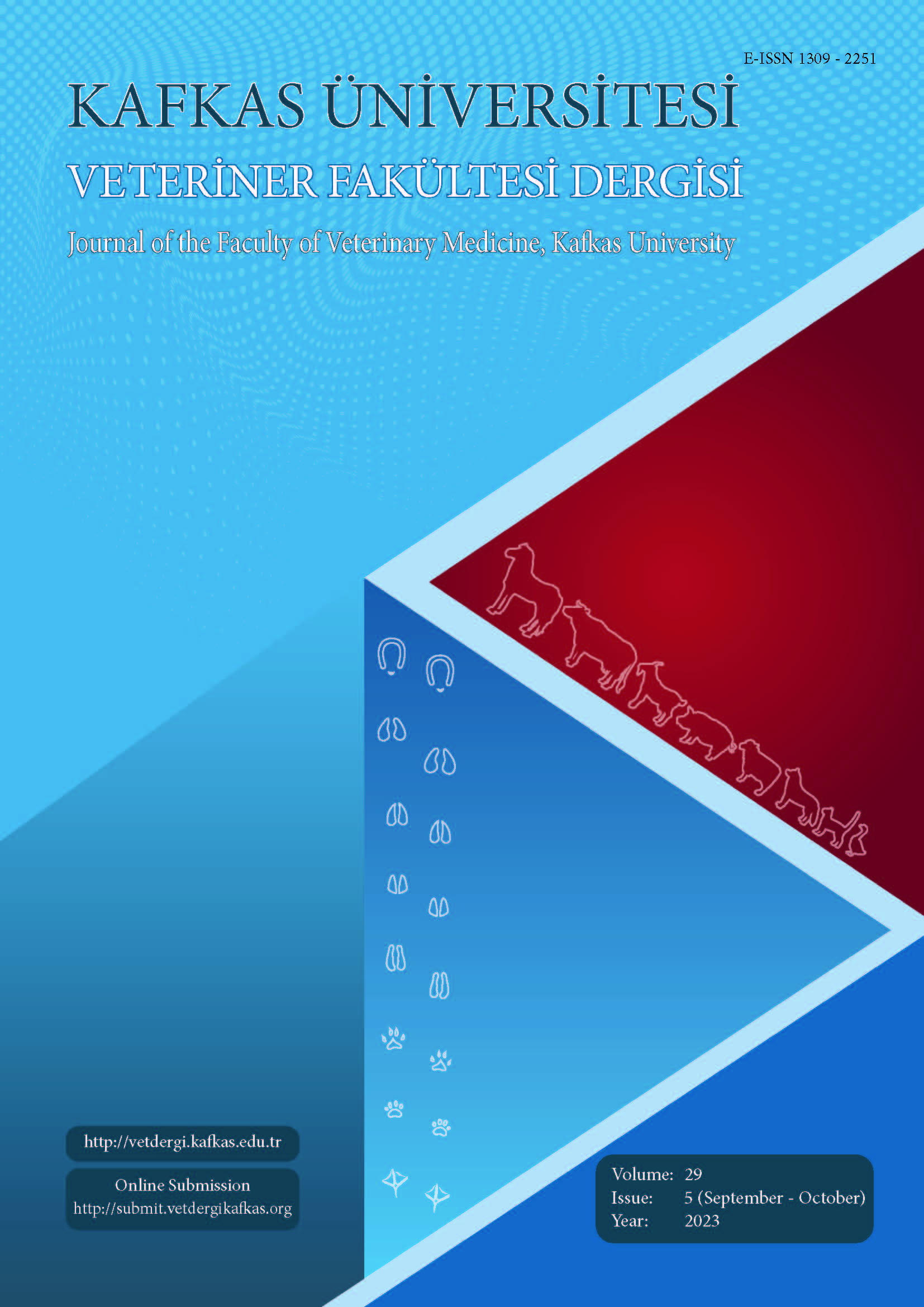
This journal is licensed under a Creative Commons Attribution-NonCommercial 4.0 International License
Kafkas Üniversitesi Veteriner Fakültesi Dergisi
2023 , Vol 29 , Issue 5
The Histopathological Evaluation of Effects of Application of the Bovine Amniotic Fluid with Graft on Peri-Implant Bone Regeneration
1Muş Alparslan University, Faculty of Health Sciences, Department of Nursing, TR-49250 Muş - TÜRKİYE2Firat University, Faculty of Veterinary Medicine, Department of Surgery, TR-23119 Elazığ - TÜRKİYE
3Firat University, Faculty of Veterinary Medicine, Department of Pathology, TR-23119 Elazığ - TÜRKİYE
4Firat University, Faculty of Medicine, Department of Esthetic, Plastic and Reconstructive Surgery, TR-23119 Elazığ - TÜRKİYE
5Harran University, Faculty of Dentistry, Department of Oral and Maxillofacial Surgery, TR-63290 Şanlıurfa - TÜRKİYE
6Dicle University, Faculty of Dentistry, Department of Oral and Maxillofacial Surgery, TR-21280 Diyarbakır - TÜRKİYE
7Firat University, Faculty of Dentistry, Department of Peridontology, TR-23119 Elazığ - TÜRKİYE DOI : 10.9775/kvfd.2023.30031 This study aimed to determine the effects of bovine amniotic fluid combined with bone graft in treating peri-implant bone defects with guided bone regeneration. Twenty female Sprague–Dawley rats were divided into two groups. Bone sockets with a diameter of 4 mm in the coronal part and a diameter of 2.5 mm in the apical part of the implant were created into the corticocancellous bone in the metaphyseal parts of the right tibia bones of all subjects. Implants with a length of 4 mm and a diameter of 2.5 mm were placed in the bone sockets. In the sham surgery group (n = 10) was the circumferential bone defect equivalent to half of the 4-mm implant length, which occurred between the implant and the bone, filled with bovine xenograft. Bovine xenografts were filled with amniotic fluid mixture in the experimental group (n = 10). After 8 weeks of recovery, all rats were sacrificed. The implants were extracted from the soft tissues and the surrounding bone. Subsequently, the bones were decalcified and prepared for histological analysis. The percentage of newly regenerated bone (NRB) formation and fibrosis in the bone defect area around the implant was calculated from all sections. NRB was found in 37.4±4.4% of controls and 41.4±2.63% of test animals (P<0.05 and P=0.024, respectively). Fibrosis formation was found at a rate of 38.6±5.06% in the control group and 33.2±5.38% in the test group (P<0.05 and P=0.033, respectively). It was considered that combining bovine amniotic fluid with bone transplant could be a useful way of treating bone abnormalities. Keywords : Bone graft, Bovine amniotic fluid, Guided bone regeneration, Peri-implant bone defect, Tibial bone










